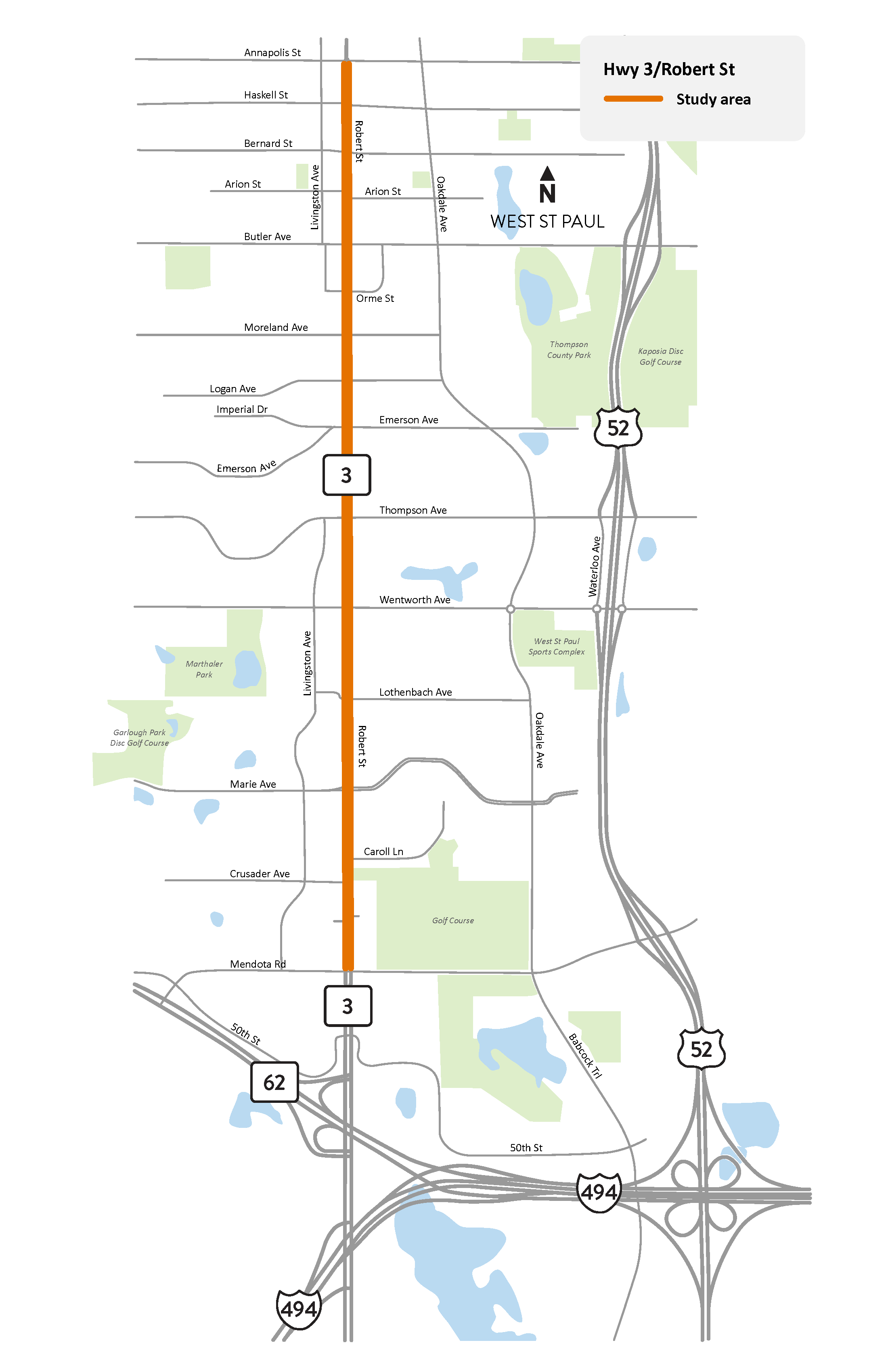Study complete
About this study

South Robert St. in West St. Paul study area map
In 2024 and 2025, we studied Hwy 3/South Robert St. between Mendota Rd. and Annapolis St. in West St. Paul to identify possible improvements to safety and connectivity for people who walk, bike, ride transit and drive.
This section of South Robert St. was reconstructed in 2015-2016 to improve transportation mobility, access management and safety. The reconstruction added a center median to restrict hazardous left turns, consolidated driveways along the road to simplify access and installed new traffic signals, streetlights and landscaping. Despite those improvements, the section of roadway has seen continued safety concerns for users since completion of the reconstruction project.
This study was coordinated with Metro Transit to prepare the area for the G Line arterial Bus Rapid Transit service, which will include new on-street transit stations in the study area.
Summary of work
- Assessed and reported on existing conditions
- Asked people to share their transportation experiences and needs
- Developed and recommended ideas for improvement
- Coordinated with the planning, design and construction of Metro Transit’s G Line arterial Bus Rapid Transit service
